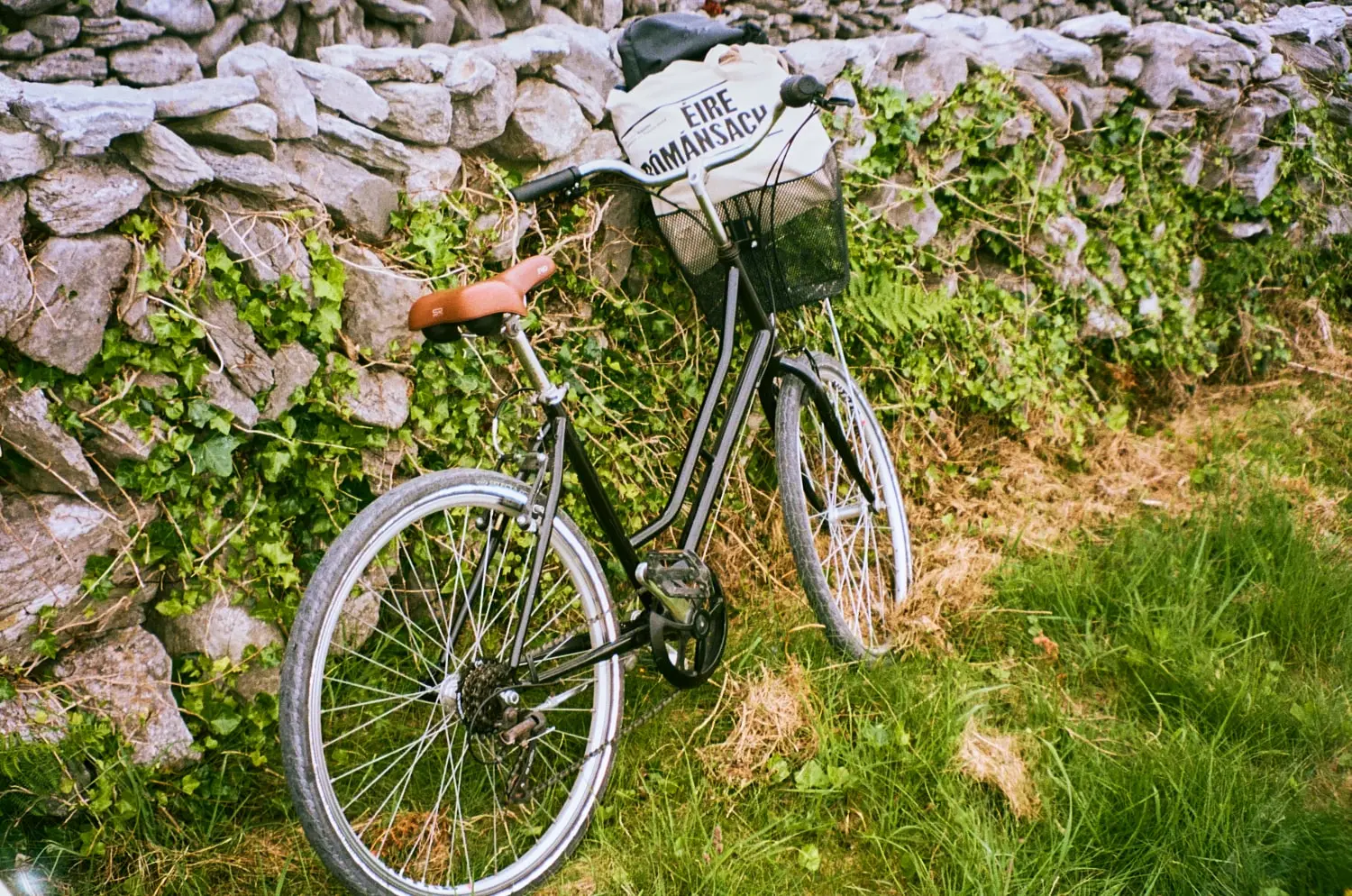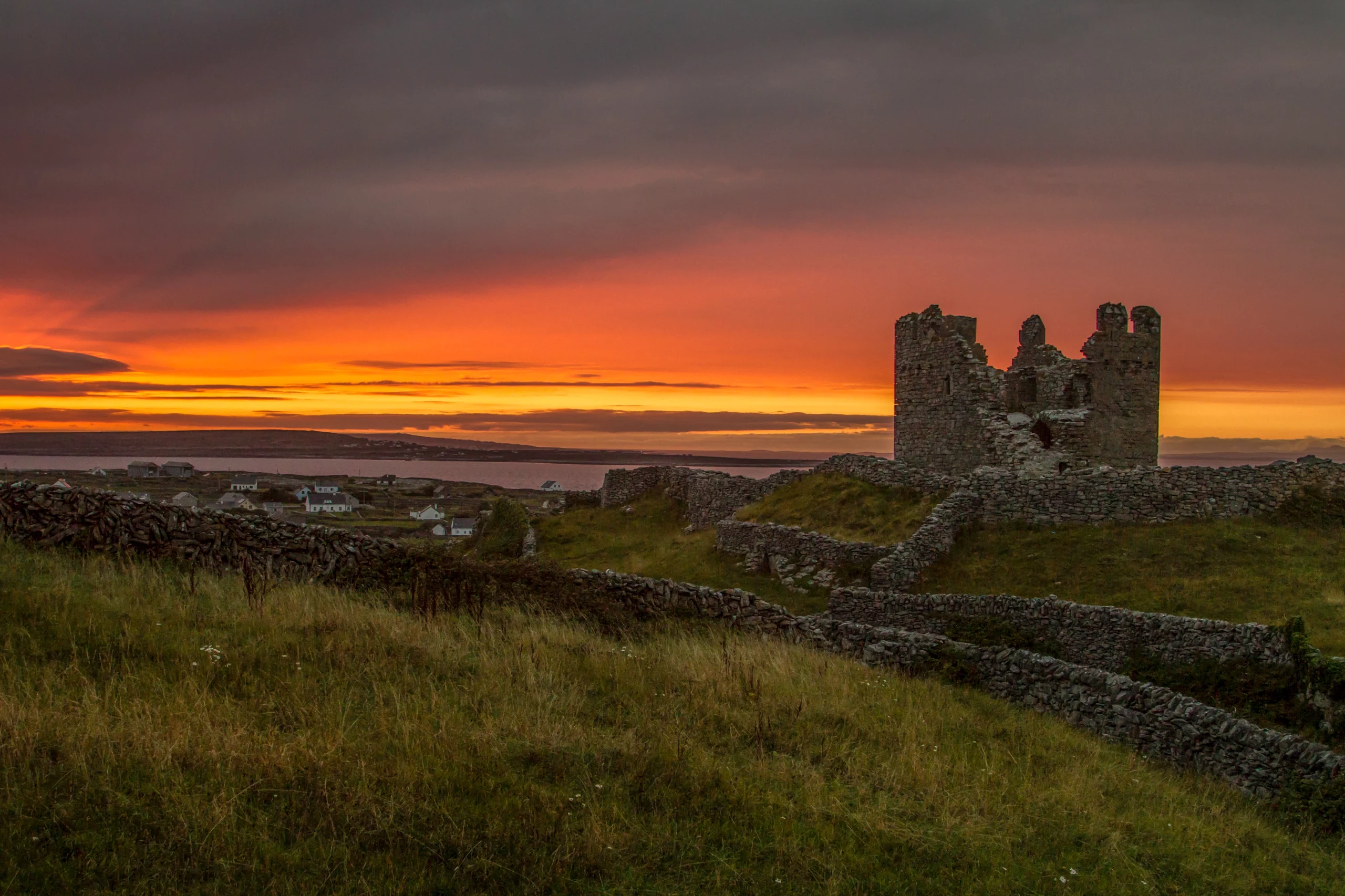A seasonal guide to choosing a time of year to visit Aran

The three Aran Islands—Inis Mór, Inis Meáin, and Inis Oírr—are great year-round destinations to escape to. Their uniquely wild limestone landscapes, rich Irish culture, and instant connection to nature is unlike anywhere else in Ireland or in the world.
Saying that, depending on the time of year you visit, your experience can be dramatically different.
So, when is the best time to visit the Aran Islands? Let’s break it down by season, and I’ll give you some pros and cons for each. All you’ll have to do is choose the perfect time for your island escape.
So when is the Best time of year to visit the Aran Islands?
Spring April/May – Everyone is fresh
As the long dark evenings start to slowly melt away islanders being to come out of their hibernation. Seasonal tour operators start to dust off and tourists start to visit again.
- Milder weather: Temperatures begin to warm making exploration more enjoyable. . Longer spells of daylight.
- Fewer tourists: It’s not peak tourist season yet, so you can enjoy the islands’ beauty without the crowds. You could even have whole stretches of coastline or historical sites like Dún Aonghasa all to yourself.
- Wildflowers bloom: The landscape becomes dotted with wildflowers, bringing pops of color to the stone walls and fields. This is a perfect time for photography and nature walks.
Cons:
- Unpredictable weather: Even though the temperatures is milder, spring weather can be unpredictable. You might get sunshine one moment and a rain shower the next, so packing layers and waterproof gear is a must.
- Limited services: Some cafes, guesthouses, and tour operators may still be closed or have limited hours as they gear up for summer.
Best time to visit the islands for: Travelers seeking peace, quiet, and nature at its freshest!
June-August: Summer Time = busy time
Summer is the most popular time to visit the Aran Islands, and for good reason. It’s the season when the islands are at their warmest and most vibrant.
Pros:
- Best weather: The weather in summer is typically warm and pleasant, but who really knows any more. Long daylight hours mean you can explore from sunrise to sunset. Amazing sunsets when the weather is fine.
- Festivals and events: Summer brings a lively buzz with local festivals, traditional music sessions, and more cultural events. There will be music in the pubs almost ever night.
- Full range of services: All tourist services—cafes, restaurants, B &’Bs, bike rentals, and ferries—are in full swing. Plenty of options for activities, food, and accommodations.
Cons:
- Crowds: The islands can get busy, especially Inis Mór, which is the largest and most popular. If you’re looking for solitude, you might find the beaches and historical sites more crowded during this season.
- Higher prices: With demand high, accommodation and ferry costs tend to rise. Booking early is essential if you want to secure your spot during the peak season.
It’s the best time of year to visit the Aran Islands for those looking for the full Aran Islands experience. Good weather, festivals, and all amenities available.
“The islands are in full swing during the summer”
Sept- November Autumn – slowing down
As summer fades, autumn on the Aran Islands offers a quieter, more reflective experience, with cooler temperatures and stunning landscapes.
Pros:
- Fewer crowds: By September, the bulk of the tourists have gone, leaving the islands much quieter. You’ll have more space to breathe and enjoy the serenity of the Aran Islands without the summer hustle.
- Golden landscapes: The autumn light casts a magical glow on the islands. The grasses and stone walls take on rich, warm hues, making this a perfect time for photographers or anyone wanting to capture the islands in a different light.
- Cultural experiences: Local life returns to a more normal pace, offering visitors an authentic glimpse into island living. You’ll find the islanders more relaxed, as the rush of summer tourism has calmed down.
Cons:
- Cooler temperatures: Autumn weather can get chilly, unless we are having an India Summer. Rain becomes more frequent, and the Atlantic winds can be quite fierce.
- Shorter days: By October, the days start to get noticeably shorter, which can limit how much sightseeing you can pack into a single day.
Best time of year for visiting Aran for: Visitors seeking peace, beautiful autumn landscapes, and a more authentic cultural experience.
October- March – Winter
Visiting the Aran Islands in winter offer a dramatically different experience. While not for everyone, those willing to brave the colder weather will find something magical in the solitude.
Pros:
- Ultimate peace and quiet: If you want the islands all to yourself, winter is your season. With few tourists and even fewer day-trippers, you’ll get a rare sense of isolation that’s hard to find anywhere else.
- Wild winter scenery: The rough Atlantic, coupled with mist and the occasional winter storm, creates a moody, dramatic landscape. It’s a time for reflection and peaceful walks, with the islands’ natural beauty stark and untamed.
- Lower costs: With tourist numbers at their lowest, accommodation and ferry prices tend to drop.
Cons:
- Challenging weather: Winter as a time time to visit the Aran Islands is not for the faint-hearted. The winds and rain can be relentless at times. Ferries are also more likely to be cancelled due to stormy weather, which can affect travel plans.
- Limited services: Many businesses, including restaurants and guesthouses, close for the winter, and only the essentials remain open. You’ll need to plan your trip carefully and make sure you have everything you need.
Best for: Adventurous travelers who embrace solitude, stormy weather, and quiet reflection.
The Irish language is spoken daily by less than 2% of the Irish population. Even though the generation that only spoke Irish, having no English are no more the Irish language is still spoken daily on the island, in our schools and communities.
English is the global language and with globalisation comes change.
Visit the island in the quieter months, spend a week maybe more there and you will have ample opportunity to listen, learn and speak a cúpla focal(a few words).
So, when is the best time to visit the Aran Islands?
The best time to visit the Aran Islands depends on what you’re looking for in your trip. Summer is ideal for those seeking the best weather, festivals, and a lively atmosphere. Spring and autumn are perfect for those who prefer fewer crowds and a more relaxed pace, with the bonus of beautiful wildflowers or golden landscapes. Winter is for the true adventurers, offering a raw, wild experience of island life.
No matter when you visit, the Aran Islands will charm you with their beauty, culture, and timelessness. Just be sure to pack for all weather—after all, you’re visiting islands in the Atlantic!


